Back to school, and beyond
August 18, 2011
It may seem like summer just started, but it’s that time again. School hallways across the county will soon clamor with a cacophony of young people headed for class. Are your scholars fully equipped? If not, help is on the way.
Over the next two weeks, resource fairs will provide families in the San Fernando Valley free assistance for the coming school year and beyond. Three of them will also provide the now-mandatory Tdap (whooping cough) vaccine. Here’s what’s on tap:
Sylmar
The “Back to School Children’s Health Fair” sets up on Saturday, August 20, from 12 p.m. to 3 p.m. at El Cariso Park, 13100 Hubbard Street. It is organized and sponsored by L.A. County Supervisor Zev Yaroslavsky and L.A. County’s Department of Parks and Recreation.
Resources include:
- Tdap vaccinations from L.A. County Department of Public Health
- Free backpacks filled with school supplies (while supplies last–there are 300)
- Dental screenings from UCLA School of Dentistry and Kids Community Dental Clinic
- Vision screenings from Valley Community Clinic
- Diabetes screenings from Mission Community Hospital
- Physical activities and body mass indexing with Valley Care Community Consortium
- Asthma Education from Northeast Valley Health Care
- Children’s fingerprinting from the Masonic Lodge (for identification)
- Earthquake preparedness from Yogi Bear School House Rock
- Free books and tutoring information from ABC Learn
- Valuable information from local government agencies and community organizations, and arts and crafts for entertainment
San Fernando
This “Family Resource Fair” takes place Saturday, August 27, from 10 a.m. to 2 p.m. at San Fernando High School, 11133 O’Melveny Avenue. Hosted by State Assemblymember Felipe Fuentes, the event’s 30 co-sponsors include Walgreens, Pacoima Beautiful and Supervisor Yaroslavsky’s office.
Resources include:
- Immunizations (including Tdap)
- Bicycle helmets and training
- Dental and vision screenings
- Blood pressure and asthma screenings
- Diabetes and cholesterol testing
- Child car seat inspections (plus, free seats for qualifying families)
- Child fingerprinting
Canoga Park
Part one of “Back-to-School Resource Fair” is Saturday, August 20, from 9 a.m. to 12:30 p.m. at 21400 Saticoy Street. Hosted by State Assemblymember Bob Blumenfield, the event is co-sponsored by New Economics for Women and various local officials. (Please note: This location will not offer the Tdap vaccine)
Resources include:
- Free haircuts from Van Nuys Academy of Barbering Arts
- Fitness activities from the West Valley and Mid Valley YMCAs
- Free school supplies and backpacks
- Physicals from New Economics for Women
Van Nuys
Part two of the “Back-to-School Resource Fair” is just like the first (see above), with one important difference: Tdap vaccinations will be available for the first 150 in attendance. The fair is Saturday, August 27, from 9 a.m. to 1:30 p.m. at 6931 Van Nuys Boulevard.
Come out to any of the fairs to get a cost-free start to a healthy, successful school year.
Posted 8/18/11
Give the beach a hand
August 18, 2011
Summer is a beach’s time to shine, as millions flock to the surf and sand of Southern California. Unfortunately, the crowds leave behind plastic bags, cigarette butts and other trash. Eco-group Heal the Bay’s “Nothin’ but Sand” volunteers help restore those shores, and this Saturday they head to Will Rogers State Beach, which could use a little TLC after the long, hard season.
“Will Rogers is a heavily used beach,” said Meredith McCarthy, Director of Programs at Heal the Bay. “In these times of budget crisis, it’s nice to back up beach maintenance and give these beaches a thorough cleaning so the hundreds of thousands of people who go there have the best experience possible.”
McCarthy notes that this year’s volunteers seem more educated about local environmental issues that affect beaches, a change she attributes in part to new government initiatives. “People now have an understanding of the importance of things like bag bans and Styrofoam bans–things the County has been such a good lead on.”
In an effort to increase participation in the cleanups, Heal the Bay has partnered with Ford Motor Company. Volunteers who test drive one of Ford’s new eco-friendly vehicles are entered to win one, and runners-up could win VIP access to a private beach party at Hotel Erwin. Even better, the company donates $50 to Heal the Bay’s cleanup efforts for each test drive. Winners will be announced at Dockweiler State Beach next month during Coastal Cleanup Day.
Volunteers for the cleanup must be 12 years old or accompanied by a parent. Drivers who are 18 years old with a valid license must schedule a test drive online. Bags and gloves will be provided, but help cut down on waste by bringing your own gloves, bag or bucket from home. All volunteers must sign a waiver, available online or at the event. Registration for the cleanup is encouraged, but not required, and can be made by email or by calling 1-(800) HEAL BAY, extension 148.
It all takes place this Saturday, August 20, at 15800 Pacific Coast Highway, by the end of Temescal Canyon Road in the Palisades. Test drives start at 9 a.m. and the cleanup is at 10 a.m. Parking for this particular cleanup is just a buck. If you want to help out but can’t make the trip, you can always donate a few dollars online to train and supply volunteers.
Posted 8/18/11
Weighing in on Alzheimer’s
August 17, 2011
 Here’s a chance to listen up—and speak up—about a disease that affects up to 5.4 million Americans. Alzheimer’s Association wants your thoughts, comments and suggestions at an important public forum in Los Angeles.
Here’s a chance to listen up—and speak up—about a disease that affects up to 5.4 million Americans. Alzheimer’s Association wants your thoughts, comments and suggestions at an important public forum in Los Angeles.
The forum is part of a nationwide effort to better serve those living with Alzheimer’s. Input will be used to inform the U.S. Department of Health and Human Services this fall as it drafts the first ever National Alzheimer’s Plan, in accordance with the National Alzheimer’s Project Act. President Barack Obama signed the Act into law on January 4, 2011–check out his video message on the battle against Alzheimer’s.
Alzheimer’s Association fights the disease and its impacts by working to end it with new research, by providing and improving care for those affected, and by promoting brain health to prevent dementia.
Be heard this Tuesday, August 23, at Alzheimer’s Association’s local office, located at 133 North Sunol Drive in East Los Angeles. The event lasts from 6 p.m. to 8 p.m., and light refreshments will be served. RSVP by calling Joseph Herrera at (323) 900-3104. If you cannot attend the meeting, you can still submit a comment for consideration here.
Posted 8/17/11
CicLAvia spreads its wheels
August 17, 2011
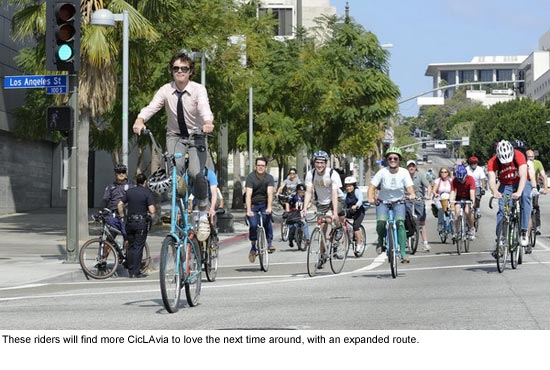
This October, the bicycle street celebration CicLAvia will expand its route to include even more of Los Angeles, building on the popularity of prior events. Tens of thousands of people celebrated the car-free streets last October, surprising many in a city known for its dominant automobile culture.
There are two new branches to the route. One stretches south through the Fashion District, ending at the African American Firefighter Museum on Central and 14th Street. The other spur heads north, going through Olvera Street on its way to the heart of historic Chinatown. With these new additions, CicLAvia now boasts 10.5 miles of open streets, which will be available for walking, skating, cycling and more. That’s an increase of three miles from the previous 7.5-mile course.
The next CicLAvia takes place October 9, and promises to bring more than biking to the added locales. The event has an increasingly celebratory atmosphere, attracting water battles, restaurant tours, marching bands and plenty of spontaneity. Stay tuned for more details as the event approaches.
Posted 8/17/11
From typist clerk to the top at DPSS
August 17, 2011
It’s funny how the little things can shape a working life.
Like that summer day in 1967 when Sheryl Spiller, fresh out of Centennial High School, went downtown to the county Hall of Administration with some girlfriends looking for summer jobs.
“I didn’t want to work for the county. But I didn’t want to wait outside either!” So Spiller went inside, aced the test and set off on a county career that has taken her from typist clerk to acting department head.
Spiller is taking the reins of the Department of Public Social Services from Philip Browning, recently named to temporarily head the troubled Department of Children and Family Services.
She’s not sure how long it will last, but it’s all happened so fast that “I don’t have time to fret over it,” she says.
Fretting doesn’t seem to be part of her make-up, in any case.
She’s built her career with a combination of front-line work, strategic savvy and a commitment to helping those around her grow on the job. And with more than three decades of DPSS service under her belt, there’s not much she doesn’t know about the department she’s been chosen to temporarily head.
“Staff jokes about not being able to get stuff by me. I’ve been there, done that,” says Spiller, the agency’s chief deputy director until her temporary appointment this week. Except for 3½ years in the county’s Child Support Services Department, where she first worked with Browning, her entire career has been within DPSS.
Browning calls her “an amazing lady” who’s been generous with her deep knowledge of the department and its people. “I think it’s remarkable that an individual could remain within one organization and have that kind of a presence and an impact,” he says.
“She’s a true, genuine leader,” adds a former boss, Joseph Guerra, now retired as the department’s assistant director. He credits her with a number of innovative contributions, including a pioneering outreach campaign to enroll uninsured children in the Healthy Families program—part of a larger initiative she headed to sign up more than 100,000 kids for Medi-Cal.
Spiller doesn’t foresee any big change of course for DPSS on her watch.
But her own role will be turned inside out.
Accustomed to working behind the scenes, Spiller now will be a more visible presence—front-woman for an agency charged with serving millions of the county’s neediest residents with programs including CalFresh (formerly known as food stamps), in-home services for the elderly and disabled and general relief assistance.
“I’ve always been the person on the inside, always had a focus on our human resources. Philip’s always been the public face of the department…I am going to have to make that shift,” she says.
Ever-shifting career challenges have had a way of turning out well for Spiller. “I would volunteer for everything, wherever the jobs were. I took some of the worst assignments.”
That included a stint at a welfare office then known as the “Unattached Men’s Center” in downtown Los Angeles, where female employees were rare at the time and the district director’s office featured a collection of knives and guns confiscated from the clientele.
“It was a really rough area,” she says. But “I didn’t even think about being afraid.”
She fondly remembers her time working at the DPSS facility nicknamed “The Pink Palace” (the name, and the colorful paint job, have passed into history but the office is still there, at Adams and Grand.) After that, she ran a section charged with coming up with innovations, such as simple, illustrated customer comment cards, that are still in use today. “It gave me an opportunity to be creative,” she says.
Her toughest challenge—although ultimately one of her most rewarding assignments—was going into the Compton office as its district director in the early ‘90s. She had to clean house; among other things, several employees were arrested on drug charges after a sheriff’s surveillance operation. And then there were those bullet holes in her office window—the consequence of being in what was then an active border area for three gangs. Internal Services Division came to the rescue with bullet-resistant glass. “Sheryl, it’s not bullet-proof,” they told her. “But it’ll slow it down.”
Working within a large organization to get things done—like knowing who to call to get those windows fixed quickly—goes along with Spiller’s broader philosophy of networking, educating and mentoring.
Whether setting up an on-premises program for employees in Compton to get their associates’ degrees or working actively with the county’s Management Council to help other managers hone their skills, Spiller says her “personal goal is to leave the department with highly educated, well-trained, success-oriented, self-motivated and healthy employees.”
She’s aware that her own professional narrative is an asset. Her rise from the clerical corps to the top ranks of management reads like a textbook case study, and in fact, a step-by-step account of it appeared in a workforce development publication put out as part of a collaboration between the county and the SEIU local representing many of its workers.
Spiller, 61, still keeps in touch with her old high school principal, who had counseled her to jump on the county track and get her college degree while she worked. (She ended up getting three, including a master’s in human resources and organization development from the University of San Francisco.)
She recently got on the phone to share with him the news of her most recent career move, to acting head of the agency where she’d started as a typist clerk back in ‘67.
“You won’t believe this,” she said, “but remember that advice you gave me 40 years ago? Well, it paid off.”
Posted 8/17/11
Backpack? Pencils? Pertussis vaccine?
August 16, 2011
 As September approaches, health officials are reminding parents that a new state law requires proof of a pertussis, or whooping cough, booster for students entering the 7th through the 12th grades.
As September approaches, health officials are reminding parents that a new state law requires proof of a pertussis, or whooping cough, booster for students entering the 7th through the 12th grades.
The law was passed last year after a dramatic increase in pertussis cases sent the incidence of the disease soaring in California to the highest levels since 1958. More than 9,000 cases were reported, including 10 deaths, most of which were among infants who had not yet been vaccinated.
According to the Los Angeles County Department of Public Health, four of those babies were in Los Angeles County, where the number of reported pertussis cases quintupled to nearly 900. In normal years, no one dies of the disease.
More commonly called whooping cough, pertussis is a serious and highly contagious respiratory infection that causes violent, uncontrollable fits of coughing and can lead to pneumonia and brain hemorrhages, among other complications. Although most children receive a vaccination, known as Tdap, before kindergarten, the immunization can wear off, and children can remain susceptible into adulthood without booster shots in adolescence.
The incidence of pertussis has risen nationally in recent years along with measles, mumps and a number of other potentially lethal childhood illnesses. To complicate matters, unfounded fears about vaccine safety have been fueled by internet rumors, leading some states to make it easier for parents to opt out of vaccinations that used to be an iron-clad requirement for school enrollment. This, in turn, decreases resistance in the general population, as the proportion of the community immunized against these dangerous, but preventable, diseases falls below the required critical mass.
The new law does allow very limited exemptions, and includes a 30-day grace period allowing schools to let students attend classes if they don’t have their paperwork in order by the first day of class. But the school district still has to work with the family to get the child vaccinated before the final deadline because even if an unvaccinated child survives an infection, he or she can pass it to more vulnerable people, such as infants, the elderly and the ill.
Although 2011 rates have dropped and no deaths have been reported so far this year, the California Department of Public Health reports that whooping cough remains at higher-than-average levels in the state—and higher than the last record year, in 2005.
Parents whose middle- and high-school children have not yet been vaccinated should contact their health care provider. The Los Angeles Unified School District has been offering free vaccines this month, along with a number of community groups. For a list of places to go in Los Angeles County for free and low-cost immunizations, click here and here. For more information from the county Department of Public Health, click here. For information in Spanish, click here.
Posted 8/16/11
“The Rock” set to roll through L.A.
August 15, 2011
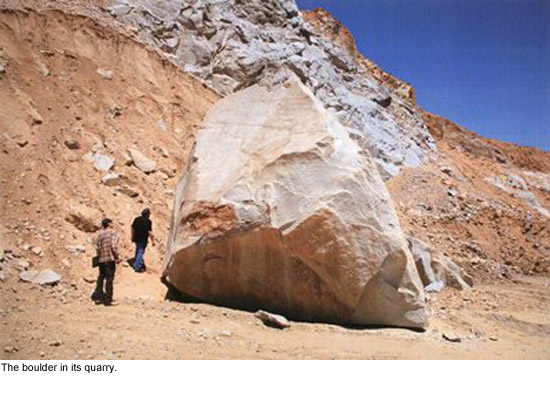
Later this summer, a 340-ton boulder will make its way from the Inland Empire to the middle of Los Angeles.
Recumbent on steel beams and a specialized 208-wheeled transporter, it will travel by night as the basin lies sleeping, a rough mass of California granite 21 feet wide and two stories tall. It will move on surface streets because it is too slow and huge for the freeway. At each dawn, it will halt; its entire 72-mile trip will take place at less than 10 mph.
From one end of the Southland to the other it will make its epic 9-day journey: down dark frontage roads beside the Pomona Freeway, past the twinkling lights of Ontario International Airport, along strip-malled boulevards in Diamond Bar and Walnut, through porch-lit subdivisions in Whittier and La Palma. Preliminary route maps take it past fast food joints in Compton, startling the night shift, and up through South L.A. by starlight, taking in the Los Angeles Memorial Coliseum and the stately palms of the West Adams District.
Finally, The Rock, as its guardians have come to call it, will turn on Wilshire Boulevard, lit by the city and flanked by office buildings, and jog north on Fairfax Avenue for just a short distance. There, at last, it will find its elegant new setting—poised over a 456-foot-long, 15-foot-deep concrete trench as part of Michael Heizer’s Levitated/Slot Mass, an internationally anticipated installation at the Los Angeles County Museum of Art.
“It’s not like anything we’ve ever done,” says LACMA’s associate vice president for special art installation, John Bowsher, who is overseeing the boulder’s odyssey.
The artwork, scheduled to open to the public in November, will allow visitors to walk underneath the massive granite formation, down a slope that will create the illusion that the boulder is levitating. Assembled, the piece will be about as tall as the Resnick Pavilion, its neighbor on the LACMA campus.
But if Heizer’s work is expected to be a tour de force, so is its installation. LACMA director Michael Govan has called The Rock “one of the largest monolithic objects moved since ancient times.”
Orchestrating the rock’s move to LACMA from a Glen Avon quarry will be Emmert International, a Portland, Ore.,-based heavy-haul transporter.
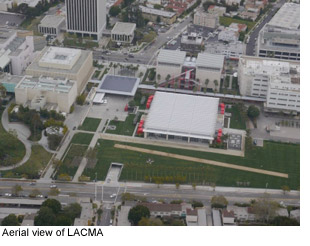 Although Emmert and LACMA officials declined to discuss costs, officials at the quarry say they have been told the move, including fees, prep work and transport, will cost about $1.5 million. Emmert’s director of operations, Mark Albrecht, says the company’s fee is considerably less than that figure. The transport, like the artwork, is being financed with private donations.
Although Emmert and LACMA officials declined to discuss costs, officials at the quarry say they have been told the move, including fees, prep work and transport, will cost about $1.5 million. Emmert’s director of operations, Mark Albrecht, says the company’s fee is considerably less than that figure. The transport, like the artwork, is being financed with private donations.
Albrecht says a 15-man crew will accompany the boulder throughout the journey, along with various LACMA officials and police escorts. Though a tentative route has been mapped out, he says, the company is still in the process of acquiring state and local permits.
So far, the boulder is expected to travel uncovered (“No plans to shrink-wrap it, or anything like that,” he says, laughing). But like the route and the planned August 5 departure date, that could change as the deadline approaches. LACMA’s Bowsher says there’s been talk of boxing or partially covering the boulder because the artist is concerned that the spectacle of a 21½-foot-high hunk of granite riding like the Rose Queen through the streets of Los Angeles County will detract from the totality of the sculpture.
Heizer, who is famously private, could not be reached for comment. But Albrecht says the artist “has been involved for the whole process,” cautioning them via LACMA to “make sure the rock isn’t scratched or etched, make sure it’s carefully handled, make sure you don’t leave any big marks on it.”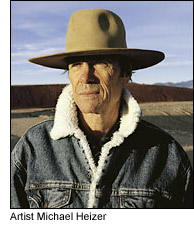
Damaging it would seem to be the least of anyone’s worries, considering that the boulder was blasted in 2005 from the face of a quarry in the Jurupa Mountains and survived intact.
“Came right from the crown of the mountain,” marveled Dan Johnston, then-project manager for Paul J. Hubbs Construction, which owned the quarry. “Blast brought it down and it landed right in the middle of soft dirt.”
Johnston, now retired, says that as soon as he saw it he called Heizer, a geologist’s grandson known for massively scaled artworks, including Double Negative, a 1,500-foot trench cut into the side of a desert mesa.
“Michael had bought some large rocks from us before, in 2004 and 2005, for other projects,” Johnston says. “He wanted granite, and the thing about granite is that not a whole lot of places have it. Riverside granite is like Portland cement—if you know about rock, it’s something you look for. And he had come to us looking for large rocks.
“Well, that was one good-lookin’ rock…Way it was shaped, I knew he’d love it. And he did, he fell in love.”
Stephen Vander Hart, co-owner of Stone Valley Materials Inc., which now owns the quarry, says he had heard that the artist paid $120,000 for the boulder. But Johnston, while refusing to divulge the actual price, says “it was nowhere near that much.”
Vander Hart says the quarry’s crews had been working around the rock for years when his company took over in 2010, and its safekeeping was a condition of the buyout.
“We’ve had to work hard to not bump into it,” he says. “Most of the guys here are just regular equipment operators, blue collar guys, love their wife and kids, and they’re just like, ‘Get it the hell outta here, let me do my job. They’re not that into art.”
But the quarry boss says he, for one, was touched when he heard LACMA Director Govan talk about the artwork and how it came to be.
“He talked about how 400 years from now, people would ask, ‘How did this group of people move something this size? What was their motivation?’ California is all strip malls and franchises. Everything is brand new, at least here in the Inland Empire. We bury our history. But this is something that will be there for a long, long time.”
Posted 6/29/11
Updated 8/16/11: The groundwork is taking a little bit longer than expected, but officials at LACMA say the rock is expected to roll shortly after Labor Day.
“There were some permitting issues for the route from the quarry, ” says Miranda Carroll, LACMA’s director of communications. The tentative start date now is September 6, with an arrival at the museum on September 14 or 15, she says.
The 340-ton boulder is a key element in a much-anticipated installation by the reclusive earth-art master Michael Heizer. Museum officials had hoped to move the 340-ton boulder from its Riverside-area quarry this month.
In any case, Carroll added, “there won’t be a big hoo-hah because we’ll be moving it in the middle of the night.”
Local libraries get their groove back
August 15, 2011
Move over, iTunes.
On July 1, the public libraries for the county and city of Los Angeles will introduce Freegal (as in “free and legal”), a new online service for library members that offers them 13 free music downloads a month from Sony Music’s vast catalog of recorded music by legendary artists in every style and discipline.
The artist roster ranges from rock ’n’ roll pioneers like Gene Vincent and Roy Orbison through classic rock legends Bob Dylan and Bruce Springsteen to more contemporary talent like Foo Fighters, Beyoncé and Pitbull. Not to mention a rich catalogue of classical, jazz, show tunes and international music.
The arrangement was made possible through an innovative agreement with Library Ideas, a Fairfax, Virginia-based new media company that licenses and distributes music, games and language-learning materials through public libraries.
Together, the County Library and City Library systems negotiated a packaged deal with the company for a pair of individual one-year subscriptions, one for each institution. Library Ideas in turn has negotiated a fee arrangement with Sony Music for access to their catalogue for city and county library patrons, who will be permitted three downloads per week for the term of the subscription. Other clients include libraries in Connecticut, New Jersey, Florida, Arizona and Tennessee.
“We’ve known for a long time that the music industry is moving toward electronic music. This is a way for us to access that and provide a service to the public, but not just any service, a high demand service,” said County Librarian Margaret Donnellan Todd.
“Music,” she added, “is as important to culture as literature, film, fine art and the performing arts. So it makes sense to offer this service since it fits our mission of providing the community with culturally significant information resources.”
Between them, the two library systems serve a combined jurisdiction of nearly eight million residents in the City of Los Angeles and 51 of the County’s other 87 incorporated cities. The County library boasts a 7.7 million volume book collection, as well as magazines, newspapers, microfilm and other holdings – not to mention downloadable audiobooks, e-books and coming soon, music. For more information on these and many other services, visit the County Library and City Library websites.
Posted 6/30/11
Urgent need, serene space
August 11, 2011
Most of us are familiar with “urgent care” as the place to go when a medical situation’s not dire enough for the emergency room—but too serious to ignore.
Now apply that concept to mental health issues and you’ll have a picture of what the county’s now offering in a newly-opened facility.
The Olive View Community Mental Health Urgent Care Center, located at 14659 Olive View Drive in Sylmar, is expected to serve 5,000 people a year and to relieve crowding in the psychiatric emergency room of the nearby Olive View-UCLA Medical Center by assessing and treating patients in psychological distress, as well as helping them to swiftly secure follow-up care.
The facility is not just state of the art, it’s full of art—funded under the county’s Civic Art policy and created by Amy Trachtenberg and Jeffrey Miller. Artful elements in the new center explore bright yet soothing motifs, imbued with natural elements. The message—architecturally, artistically and clinically—is one of healing and hope.
The $10.8 million, 10,800-square-foot project—which has earned LEED silver certification—will serve clients from the San Fernando, Santa Clarita and Antelope Valleys. The new facility will allow the county to serve an additional 2,000 people a year. Its opening comes as economic pressures and joblessness are adding stress to the lives of many.
“Opening this new mental health facility today could not have come at a better time. It’s not a moment too soon,” Supervisor Zev Yaroslavsky said. “Demand for our services is going up.”
Here’s a look at the new facility, inside and out:
Posted 8/11/11




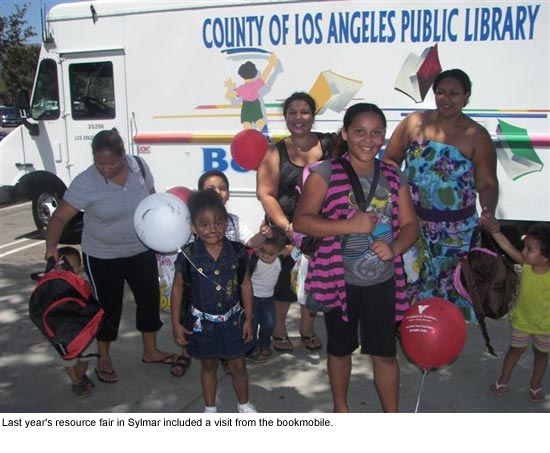
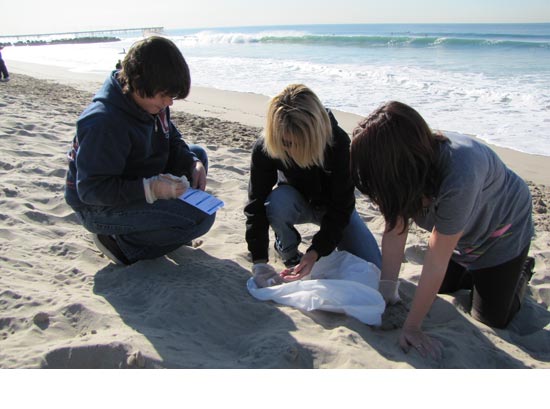
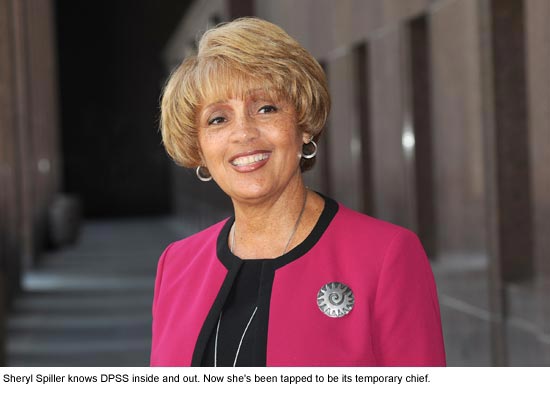

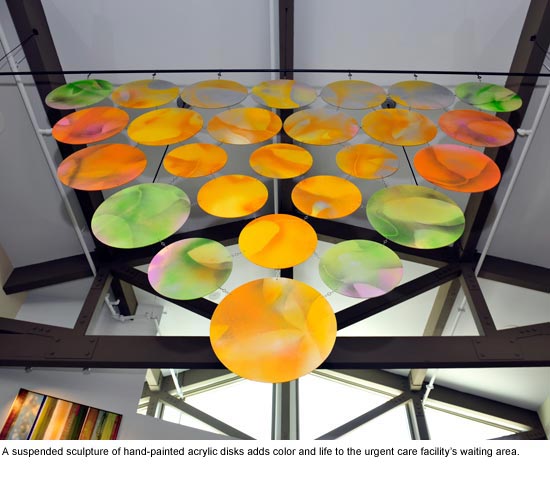










 Check for the latest closure information
Check for the latest closure information








